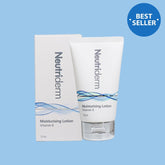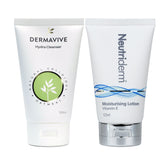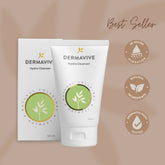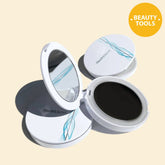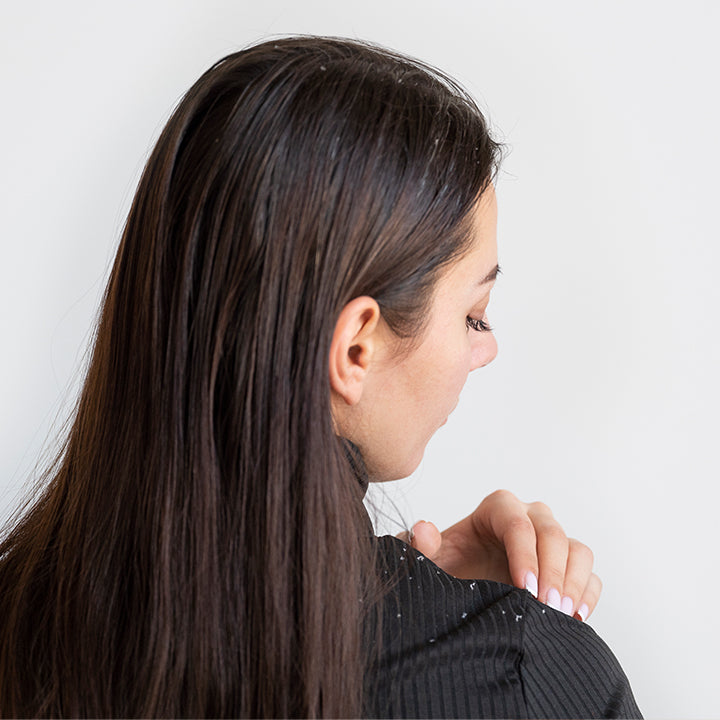Are you tired of those embarrassing white flakes dusting your shoulders? Does your scalp constantly itch, leaving you feeling self-conscious? If you're nodding along, you're not alone. Dandruff is a common scalp condition that affects millions worldwide, and while it's not harmful, it can be frustrating and impact your confidence.
This blog post is your comprehensive guide to understanding dandruff and, more importantly, how to effectively remove it and keep it at bay. We'll delve into a step-by-step hair care regimen, highlighting key ingredients that can make a significant difference in achieving a healthy, flake-free scalp. Say goodbye to the itch and hello to healthy, vibrant hair!
Why Do You Have Dandruff?
Dandruff is a common condition with several potential underlying causes. Understanding these reasons can help in choosing the most effective treatment approach. Here are some of the primary factors contributing to dandruff:
-
Malassezia Globosa Overgrowth:
This is often considered the leading cause of dandruff. Malassezia globosa is a naturally occurring yeast-like fungus that lives on the scalp of most adults. In some individuals, this fungus can overgrow, feeding on the sebum (oil) produced by the scalp. This process produces byproducts, such as oleic acid, which can irritate the scalp and trigger an inflammatory response. This inflammation leads to an increased shedding of skin cells, resulting in the visible flakes of dandruff. -
Seborrheic Dermatitis:
This is a common inflammatory skin condition that can affect various parts of the body, including the scalp. When it occurs on the scalp, it can manifest as dandruff, often accompanied by redness and greasy, yellowish flakes. The exact cause of seborrheic dermatitis is not fully understood but is believed to involve a combination of genetic factors, the Malassezia yeast, and an individual's immune response. -
Dry Scalp:
While often confused with dandruff, a dry scalp is a distinct condition caused by a lack of sufficient moisture. This can lead to small, dry flakes that are typically white and not oily. Factors contributing to a dry scalp include cold, dry weather, infrequent shampooing, harsh hair products, and insufficient water intake. While a dry scalp itself isn't dandruff, a dehydrated and irritated scalp can sometimes be more susceptible to dandruff -
Oily Scalp:
Conversely, an excessively oily scalp can also contribute to dandruff. The overproduction of sebum can create a favorable environment for the Malassezia fungus to thrive. The excess oil can also cause dead skin cells to clump together, forming larger, more noticeable flakes. -
Sensitivity to Hair Care Products:
Certain ingredients in shampoos, conditioners, styling products, and hair dyes can irritate the scalp in sensitive individuals. This contact dermatitis can lead to redness, itching, and flaking that may resemble or exacerbate dandruff. Identifying and eliminating the offending product is crucial in such cases -
Other Skin Conditions:
Certain pre-existing skin conditions, such as psoriasis and eczema, can also affect the scalp and cause flaking that may be mistaken for or occur alongside dandruff. These conditions often require specific treatments beyond typical anti-dandruff shampoos -
Infrequent Shampooing:
While it might seem counterintuitive, not washing your hair often enough can contribute to dandruff. This allows sebum, dead skin cells, and product buildup to accumulate on the scalp, creating a breeding ground for Malassezia and increasing the likelihood of flaking -
Diet and Stress:
While not direct causes, factors like a poor diet lacking in essential nutrients and high stress levels can weaken the immune system and disrupt the scalp's natural balance, possibly making individuals more susceptible to dandruff or worsening existing conditions.
Understanding these potential reasons behind your dandruff is the first step towards finding an effective solution and achieving a healthier, flake-free scalp.

Ingredients to look for
Climbazole:
This powerful antifungal agent is a cornerstone in the fight against dandruff. Its primary mechanism of action involves disrupting the cell membrane of Malassezia globosa, the yeast-like fungus that is a major trigger for dandruff in many individuals. By inhibiting the growth and proliferation of this fungus on the scalp, climbazole effectively reduces the fungal load, thereby directly addressing the root cause of flaking, itching, and associated scalp irritation. Its targeted antifungal properties make it a highly effective ingredient in anti-dandruff shampoos and leave-on treatments designed to restore scalp balance. You can easily find it in Neutriderm Anti-Dandruff shampoo, it helps combat the persistent dandruff on your scalp with the help of Climbazol.
Sodium PCA:
As a naturally occurring component of the skin's natural moisturizing factor (NMF), Sodium PCA plays a vital role in maintaining scalp hydration. Its humectant properties allow it to attract and bind moisture from the surrounding environment to the scalp, effectively combating dryness and the associated flakiness that can accompany dandruff. While not directly targeting the microbial causes of dandruff, its ability to improve scalp hydration contributes to a healthier scalp environment, making it less prone to irritation and supporting the overall effectiveness of other anti-dandruff ingredients.
Hydrolyzed Protein:
These proteins, broken down into smaller peptides and amino acids, offer supportive benefits for a dandruff-prone scalp and hair. Their smaller size allows for better penetration into the hair shaft, where they can help to strengthen and repair damage, reducing breakage that can be exacerbated by excessive scratching. Furthermore, hydrolyzed proteins can contribute to improving the scalp's barrier function and aiding in moisture retention, indirectly helping to alleviate dryness and create a healthier foundation for hair growth and scalp health, even though they don't directly target the causes of dandruff.
Saw Palmetto Extract:
Primarily recognized for its potential to inhibit DHT in the context of hair loss, saw palmetto extract also exhibits valuable anti-inflammatory properties that can benefit a dandruff-prone scalp. Inflammation is often a contributing factor to the discomfort and irritation associated with dandruff, and by helping to soothe and calm the scalp, saw palmetto extract can provide relief from these symptoms. While its direct impact on the Malassezia globosa fungus is not the primary mechanism, its anti-inflammatory action can contribute to a more balanced and comfortable scalp environment.
Avocado Oil:
Rich in a variety of beneficial components, including monounsaturated and polyunsaturated fatty acids, as well as essential vitamins and antioxidants, avocado oil offers significant moisturizing and nourishing properties for the scalp. Its emollient nature helps to soften and hydrate a dry, flaky scalp, while its vitamins and antioxidants can contribute to overall scalp health and potentially offer mild anti-inflammatory benefits. However, it's crucial to use avocado oil judiciously, as its richness can sometimes be counterproductive for some individuals with dandruff by potentially trapping sebum; therefore, it's often best used as a pre-shampoo treatment.
Conclusion
Dealing with dandruff can feel like a never-ending battle, but armed with the right knowledge and a consistent hair care regimen, you can effectively manage and even overcome this frustrating condition. By understanding the potential reasons behind your dandruff and recognizing the power of key active ingredients like climbazole, sodium PCA, hydrolyzed protein, saw palmetto extract, and avocado oil, you can make informed choices about the products you use.
Remember that consistency is key. Incorporating anti-dandruff shampoos with targeted ingredients, hydrating your scalp, and considering supportive treatments can make a significant difference. Pay attention to how your scalp responds to different products and ingredients, and don't hesitate to consult a dermatologist if your dandruff is severe or persistent.
The journey to a healthy, flake-free scalp may take time and patience, but by adopting a proactive and informed approach, you can finally say goodbye to those embarrassing flakes and embrace the confidence that comes with healthy, vibrant hair. Take control of your scalp health and enjoy the feeling of a clean, comfortable, and dandruff-free future!
